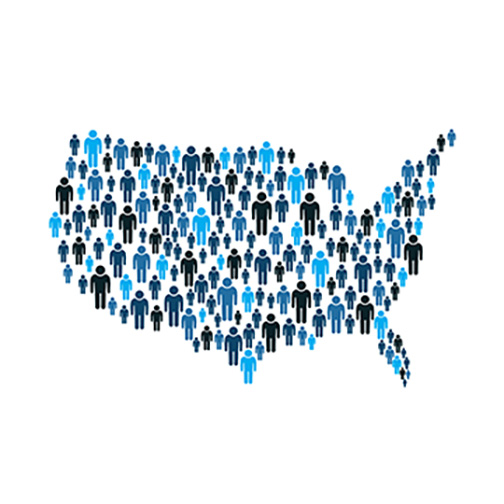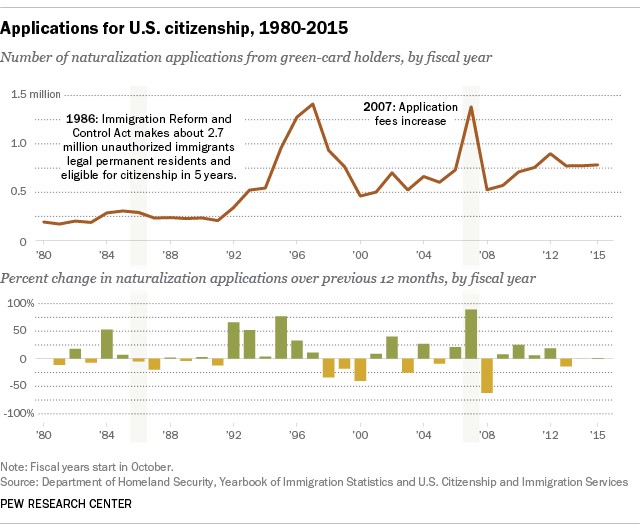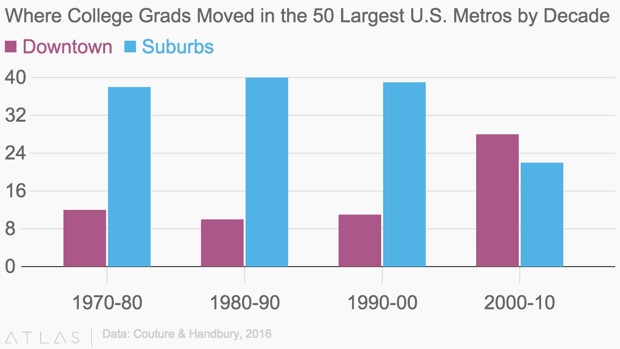
What the Re-Urbanization of America Means for Marketers
Filed Under: Market Research, Generations

Anthony Bahr
The past decade has been partially defined by a series of unprecedented economic and demographic events. From The Great Recession in 2008 to the rise of The New Independents in 2015, the prototypical American consumer will never be the same, and neither will the strategies and tactics that marketers use to reach them.
In 2016, the topic du jour seems to be immigration – an issue which has directly or indirectly influenced everything from the mundane (e.g. call center scripts) to the remarkable (e.g. the outcome of presidential elections).
While immigration is certainly a salient policy issue, at C+R we often ask ourselves if it is something that brands should be factoring into their marketing plans. We tend to think the answer is “yes,” and we see many brands evolving to cater to this new, multicultural American consumer:
- Neighborhood Trust Federal Credit Union (New York City) is issuing loans to legal immigrants with no credit history.
- Sling TV allows consumers to live stream native-language television channels from a variety of different countries.
- Jollibee, a Filipino fast food chain is breaking into the U.S. market, bucking the trend of America exporting brands rather than importing them.
However, we also question if the influence of immigration is being overstated and if there are other macro tends to which marketers should be responding.
During an election cycle dominated by strong arguments for and against immigration, and with extremely polarizing assessments about the impact immigration is having on society, it’s easy to deduce that immigration is the most prevalent social issue of the day.

But in reality, the rate of people legally emigrating from foreign countries to the United States has significantly slowed since peaking in 1997 and has been fairly stable in recent years.
As for illegal immigration, the Pew Research Center concludes that, “the rate of unauthorized immigration has been stable for almost a decade.” This is because, “the number of new unauthorized immigrants is roughly equal to the number who are deported, leave the U.S. on their own, convert to legal status, or die.”
While immigration is certainly an influential social force that marketers should consider, there is another migration underway: the return of American consumers from the suburbs to urban centers, and this migration shows few signs of slowing down.
A Brief History Lesson
In the post-World War II years America’s large cities suffered from substantial population declines, a trend which continued through the 1970s. During this time, New York City, Boston, Chicago, Minneapolis, and Atlanta each lost more than 10% of their respective populations, most of which resettled in newly established suburbs.
This urban flight coincided with a huge population increase. The “baby boom” accelerated the concentration of the suburban population and, by the end of the 1970s, one-third of the U.S. population lived in a suburb.
Suburbanization and a booming economy resulted in more leisure time and increased disposable income, and today’s Consumer Society was born. Marketers were quick to respond:
- Leveraging consumers’ anxiety to maintain a suburban lifestyle, brands introduced the notion of “new and improved” and “planned obsolescence” to artificially prop up demand.
- Leisure time became a status symbol, so time-saving products were introduced (e.g. microwaves, frozen foods) and quick serve restaurants expanded.
- The era of suburbanization was relatively peaceful, so the military industrial complex transferred innovations from the battlefield to the shelf, and the consumer electronics category was born.
- The proliferation of television led to the maturation of TV as a viable advertising platform that would have a permanent cultural impact.
The Return to Cities

In 2002, George W. Bush proclaimed that, “right here in America if you own your own home, you’re realizing the American Dream.”
Then came the Millennials, whose lifestyle choices could not have been a stronger rebuttal of this long-held belief.
The preference for suburban living which lasted through the 1980s and 1990s was turned upside down overnight (demographically speaking). From 2000 to 2010, more college-educated professionals aged 25 to 34 moved downtown than to the suburbs in 39 of the 50 largest U.S. metros.
This rapid shift in living preferences reflects – and can be explained by – a similarly dramatic shift in consumer values:
- Higher barriers to home ownership, particularly after 2008, made long-term renting more acceptable and, in many cases, more financially responsible.
- Deferment of marriage and children in order to prioritize career and self-fulfillment (see The New Independents) was no longer considered taboo.
- Prioritization of experiences over ownership led to the Sharing Economy, which as a business model is more likely to succeed in high-density areas.
- A renewed importance on quality, sustainability, and business ethics – a rebuttal of the pillars of the Consumer Economy – resulted in status being defined not by conspicuous consumption by rather by conscious consumption.
It’s important to note that while Millennials may have pioneered the re-urbanization movement, they are not the only cohort fueling the growth in the urban population.
As Boomers retire they are becoming increasingly likely to relocate to cities, and even college educated Gen X consumers have started to demonstrate a preference for urban living.
Opportunities for Marketers
As with suburbanization, the move back to cities is about more than demographics. It’s paramount for marketers to think of “urban” not only as a place, but also as a mindset because re-urbanization necessitates a change in lifestyle and thus a change in values.
Just as marketers reacted to the advent of the Consumer Society in the 1950s, we need to ask ourselves what values are important to consumers in an increasingly urban society. Consider the following:
- Access to goods is more important than ownership of goods. The Sharing Economy and brands like Zipcar and Airbnb led the way, but this model is now bleeding into services as well. Brands like TaskRabbit (microlabor-for-hire), Kickstarter (alternative financing), and EdX (massive open online higher education) are proving that C2C is a viable alternative to B2C.
- Those living in urban centers are more reliant on public goods like public transportation. In addition, there may be a greater appreciation for the value provided via public goods (think of garbage collection being suspended for a week in Manhattan). These circumstances breed an environment where people are more apt to think of themselves as citizens rather than consumers, resulting in greater acceptance public healthcare, housing, and financing.
- The architect Ludwig Mies van der Rohe is famous for declaring that “less is more.” While it may be extreme to classify urban dwellers as minimalists, the simple truth is that urban living necessitates a simpler lifestyle. Brands needs to reconsider everything from how they source their raw materials to their retail format to ensure they are relevant to the 3 billion people who will be living in cities by 2050.
explore featured
Case studies
